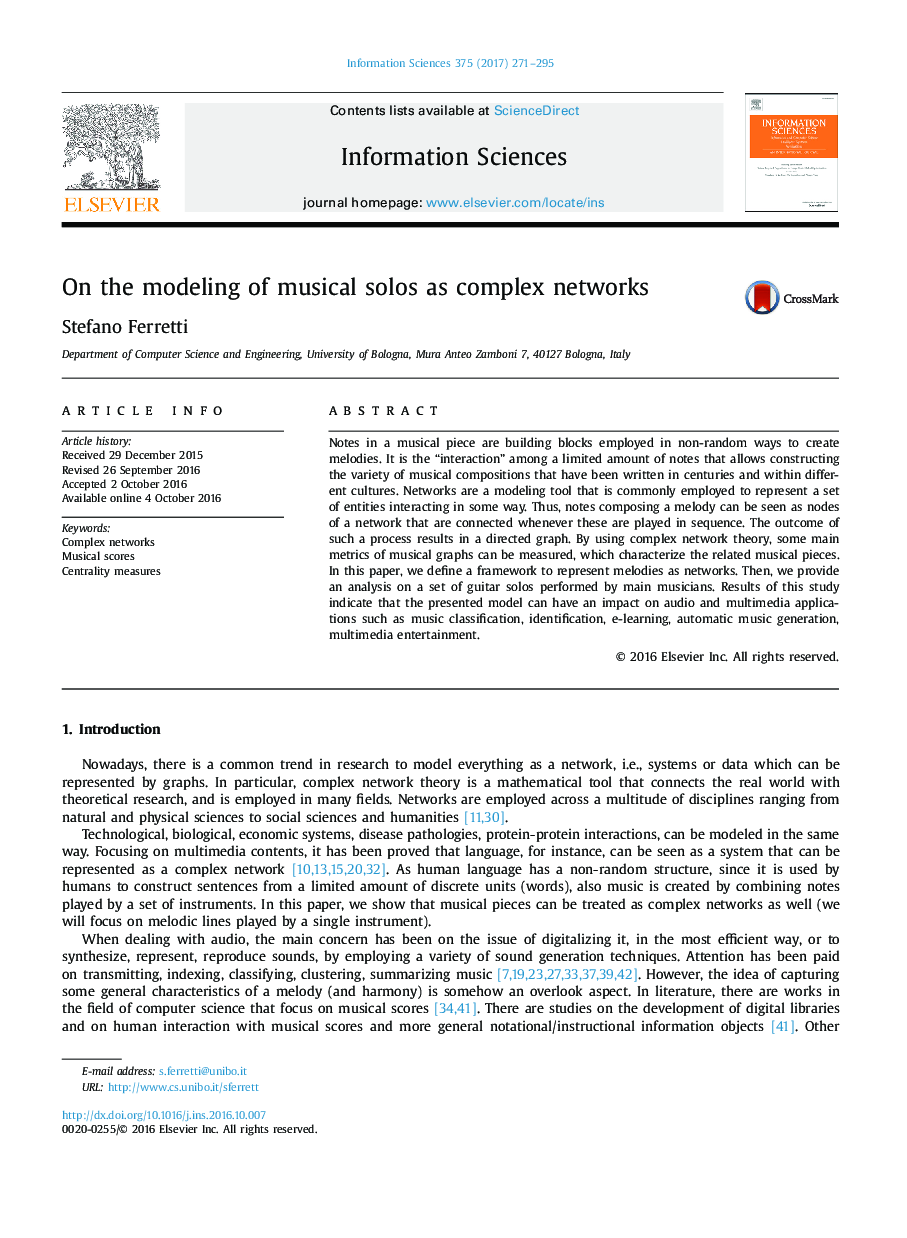| Article ID | Journal | Published Year | Pages | File Type |
|---|---|---|---|---|
| 4944965 | Information Sciences | 2017 | 25 Pages |
â¢A melodic track can be represented as a network; this allows calculating general measures characterizing it.â¢We show that networks associated to different guitar solos have different topologies, and thus, different characteristics.â¢We show how complex network theory can be profitably employed in a novel application scenario.â¢We calculate different measures on the considered networks, and present aggregate results characterizing related performers.â¢Outcomes of this study can have an impact on music classification, didactics, automatic music generation and entertainment.
Notes in a musical piece are building blocks employed in non-random ways to create melodies. It is the “interaction” among a limited amount of notes that allows constructing the variety of musical compositions that have been written in centuries and within different cultures. Networks are a modeling tool that is commonly employed to represent a set of entities interacting in some way. Thus, notes composing a melody can be seen as nodes of a network that are connected whenever these are played in sequence. The outcome of such a process results in a directed graph. By using complex network theory, some main metrics of musical graphs can be measured, which characterize the related musical pieces. In this paper, we define a framework to represent melodies as networks. Then, we provide an analysis on a set of guitar solos performed by main musicians. Results of this study indicate that the presented model can have an impact on audio and multimedia applications such as music classification, identification, e-learning, automatic music generation, multimedia entertainment.
